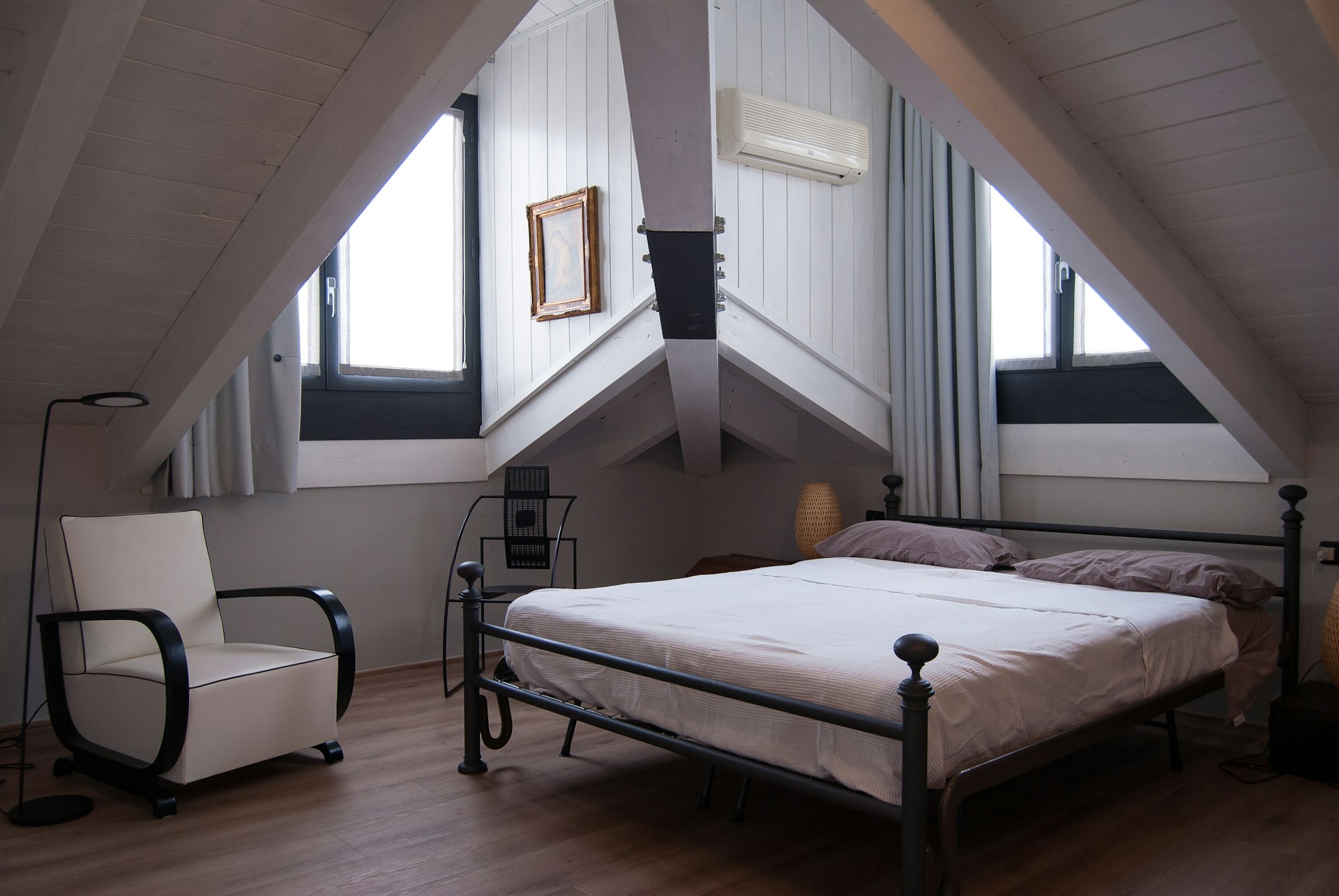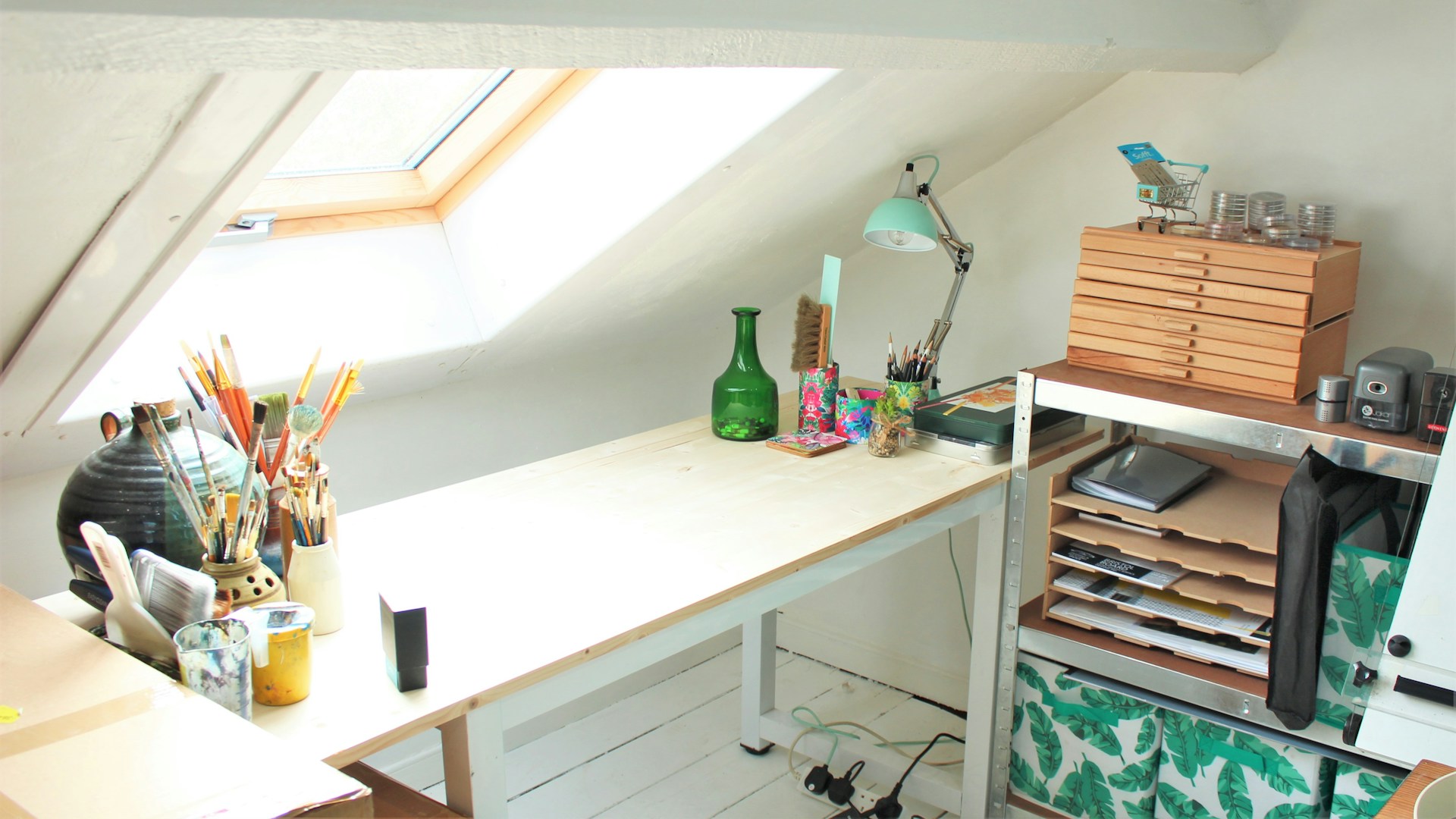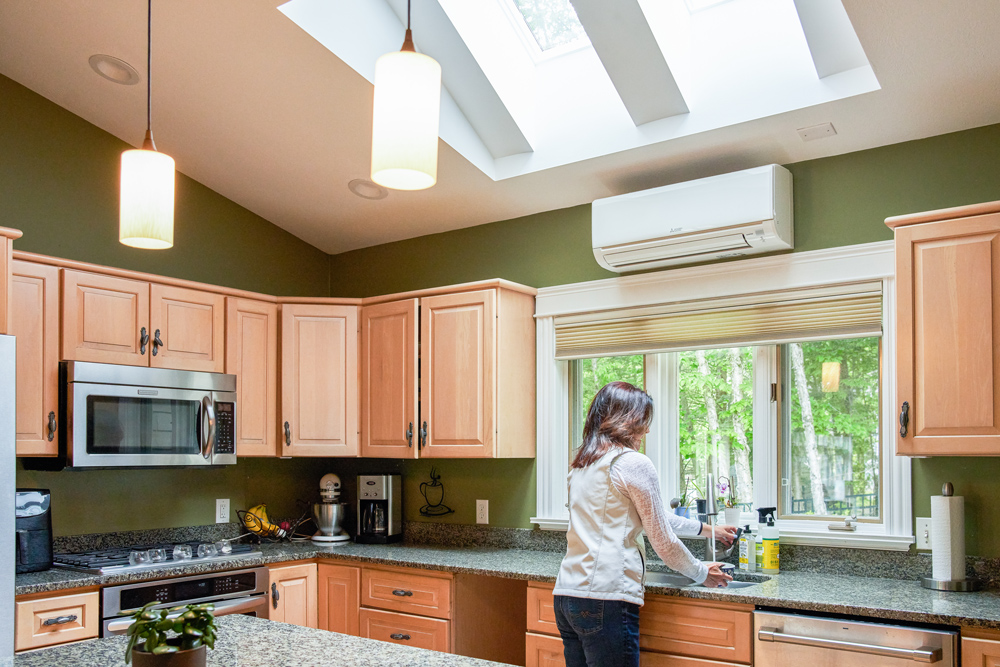Mini split heat pumps are revolutionizing home climate control with their efficiency and adaptability. Unlike traditional HVAC systems, mini splits offer the flexibility of being installed in various locations around the home, each bringing unique benefits.
This flexibility is making ductless mini-split systems the home upgrade of choice for residents of the greater Boston area, and throughout all of New England. Massachusetts’ unique Mass Save program of rebates and energy incentives is helping to drive the growth of heat pumps (one part of why mini-splits are so energy efficient).
Homeowners often ask if there are any limits to where mini-splits can be installed. Can you put a mini-split heat pump in the attic? Can you put one in the garage? What about the basement? The answer is Yes! And you can add them to other rooms, too.
No matter where you add a mini-split to your heating and cooling system, consider these factors:
- Placement high on the wall can provide optimal air distribution while minimizing interference with the room's aesthetics and functionality.
- Modern mini splits come in various designs that can blend seamlessly with your decor, ensuring that your living space remains stylish and comfortable.
- Talk to the friendly professionals at Home Mechanics for the last word on the best locations for your ductless mini-splits.
Living Rooms or Main Living Areas

As the central gathering place in most homes, the living room is an ideal location for a mini-split system. If you currently have central HVAC, you probably heat and cool your whole home based on the desired temperature in this room, but a mini-split lets you control the most actively-used room in the home separately from the rest of the house.
A well-placed unit, professionally installed, can effectively regulate the temperature in your home's heart, creating a comfortable environment for family activities and entertainment. Since mini-splits offer both heating and cooling, a single unit can address all your comfort needs.
Tips for planning: consider where family members like to sit in the room. Put a mini-split intended for cooling right above where the person who likes it the coldest sits. Avoid putting a mini-split for cooling above the person who always has a blanket on them.
Bedrooms

Photo by Antonio Caverzan on Unsplash
Personal comfort is paramount in bedrooms, and a mini split can provide customizable temperature settings for each bedroom. This heating and cooling strategy not only enhances sleep quality by catering to individual preferences.
Adding mini-splits to bedrooms also helps your home achieve optimal energy efficiency. If you have a spare bedroom for guests, there's no need to keep it at the same temperature of rooms that are in use. This idea, known as multi-zone or zonal heating, allows homeowners to control heating and cooling throughout the house in a more granular way.
Tips for planning: When installing a heat pump in bedrooms, consider the layout and the placement of furniture. The unit should be positioned in a way that optimizes air distribution throughout the room, ideally on a wall away from the bed to minimize noise. Also, consider the visual impact of the unit – it should integrate well with the bedroom's design, offering comfort without being obtrusive.
Home Offices and Workspaces

Photo by Amanda Macedo on Unsplash
With the rise of remote work, a comfortable home office is more important than ever. A mini split in this space allows you to create an environment conducive to productivity and focus. If you need different temperatures throughout the day, the mini-split remote control makes it easy to adjust your office temps on the fly.
Tips for planning: When placing a mini split in a study or home office, consider its proximity to your desk. The unit should provide adequate cooling or heating without causing drafts or noise disruptions.
Basements and Attics

Photo by Sema Martin on Unsplash
Basements and attics present unique challenges in temperature regulation due to their insulation and location in the home. A mini split can effectively transform these spaces into comfortable living areas, workspaces, or storage rooms. By doing so, you can extend the usable area of your home and provide a comfortable environment for any activity.
Tips for planning: In basements, installing the unit off the floor can protect it from moisture and ensure better air circulation. In attics, place the unit in a location that combats the extremes of hot and cold typical in these spaces.
Kitchens and Eating Areas

The kitchen and dining area are integral parts of a home, often requiring a balance between the heat generated from cooking and a comfortable eating environment. A well-placed mini split can enhance the overall comfort of these communal spaces, making them more inviting and enjoyable.
Tips for planning: In the kitchen, position the unit away from the stove and other heat sources to prevent it from overworking. In eating areas and dining rooms, consider the airflow—the unit should circulate air effectively without disrupting the dining experience.
Sunrooms and Seasonal Rooms

Photo by Point3D Commercial Imaging Ltd. on Unsplash
Have a sunroom or seasonal room? An Arizona room or a Florida room? These spaces, which often feature abundant windows and greater exposure to the elements, can greatly benefit from a mini split. Because of the windows, these rooms typically experience significant temperature fluctuations, making climate control a challenge.
A mini split can efficiently heat or cool these spaces as and when needed, expanding the number of days you can enjoy the space without overly taxing your heating or cooling system.
Tips for planning: Install the unit in a location that maximizes air distribution across the room, considering the sun's position throughout the day. This will help in maintaining a consistent temperature, making your sunroom or seasonal room a pleasant retreat regardless of the weather outside.
Challenging Rooms Far from the Furnace or AC
Rooms that are farthest from the air conditioner or furnace blowers are also likely to have poorly regulated temperatures. This is because ducts often have air leaks translating to 30% loss of heating or cooling generated by the AC and furnace.
Installing a mini-split in these rooms, and closing the vents for the central HVAC system, will create an immediate improvement in energy efficiency.
New Additions
If you’re adding on to a home, HVAC can get a little complicated. If the new space is added to your existing central heating and cooling ductwork, it is possible it will overtax the existing air conditioner and furnace which was selected for a smaller home.
By adding a mini-split to the new space, you can provide heating and cooling without additional ductwork or the extra strain on the existing system.
Man Caves & She-Sheds
When everyone is home, it is sometimes necessary to carve out personal spaces. Typically these pop-up in out-of-the-way locations (like basements and attics) or even new, purpose-built structures outside the main house.
A mini-split is ideal for adding heating and cooling to these spaces as fans and space heaters are energy-inefficient (and sometimes are fire hazards). You can keep the mini-split turned off when you’re not using the space regularly.
Bonus: Anywhere you want temperature control
It’s not uncommon for older homes to lack ductwork for central heating and cooling. When the weather is moderate, this works fine, but as summers get hotter and winters get longer, the number of moderate days per year is dwindling.
If you find yourself too hot or too cold too often, adding a mini-split to your living space and your bedroom is a great first step toward making your home more comfortable.
Mini-splits also work well in small homes, condos, apartments, tiny homes, and even historical buildings.
Common Heat Pump Location Questions
How does the placement of a mini split affect its efficiency?
The efficiency of a mini split heat pump is highly dependent on its placement. Proper installation in an area with good airflow and away from obstructions ensures that the unit operates efficiently, distributing air evenly and maintaining consistent temperatures.
Can a mini split heat pump provide enough heating and cooling for large homes?
Yes, mini split heat pumps can be effective in large homes, especially when multiple units are installed in strategic locations. This allows for zoned temperature control, ensuring each room is at a comfortable temperature.
What are the maintenance considerations for a mini split in different home areas?
Maintenance of a mini split varies slightly depending on its location. Generally, it involves regular cleaning of filters and checking for any obstructions in the airflow. Units in kitchens may require more frequent cleaning due to grease and cooking particles.
Can you put a mini split heat pump in the garage?
Placing a mini-split in the garage can be a good idea, particularly if you have plans to use the space regularly. This also applies if you want to eventually convert your garage into more living space, or if you use the garage as a home workshop.
Can you put a mini split heat pump in the basement?
Basements tend to not be insulated, making them poor locations for constant heating or cooling. But if you use your basement as additional living space it can be worth adding a mini-split unit to expand the usable area in your home by making it more comfortable.
Choose the best spot with Home Mechanics
Choosing the right spot for your mini split heat pump is crucial for maximizing its benefits. The professional installers at Home Mechanics can help you get the most out of your new system, whether it's in your living room, bedroom, home office, basement, attic, or kitchen.
Worried about the cost of a heat pump system? Don't miss out on up to $10,000 in rebates and a $2,000 federal tax credit. You may also be eligible for 0% financing up to $50,000! Contact us today to start saving money.

